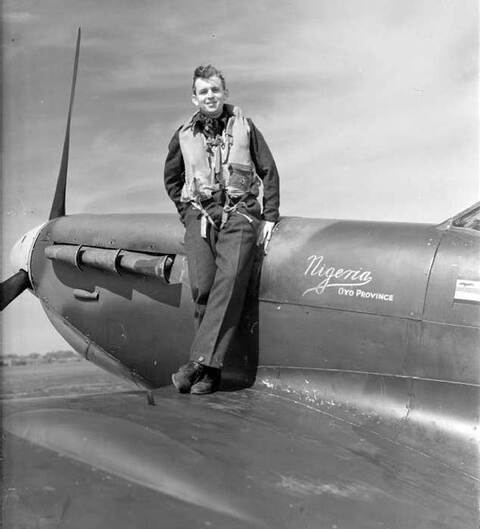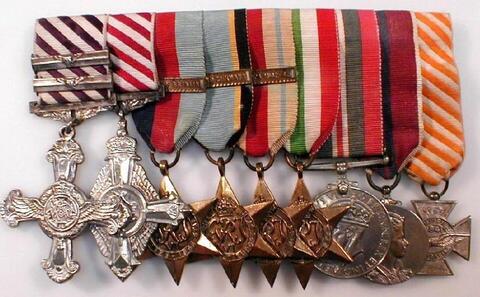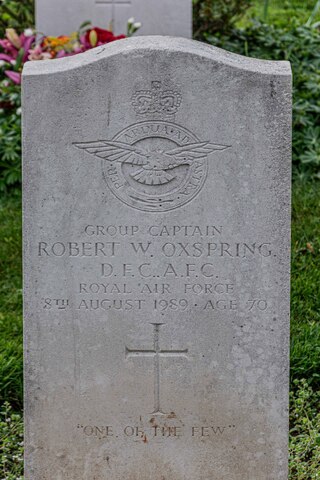- Home
- About The Project
- About The Author
- Latest additions to the project
- Operation BULBASKET
- Oradour-Sur-Glane Massacre 10 June 1944
- British Normandy Memorial
- John Northend - The Inspiration
- Lancaster W4192 "QR-E" 61 Squadron RAF
- The Cemeteries; UK, Ireland and European mini-tour
- Aarestrup Kirke, Denmark
- Aarestrup Kirke - Loss of Liberator KH410
- Aarhus Vestre Cemetery, Denmark
- Arnhem Oosterbeek Cemetery, Holland
- Basingstoke, Wortley Road Cemetery
- Bayeux War Cemetery, France
- Church Of Ireland Churchyard, Belturbet, Republic of Ireland
- Bergen-Op-Zoom, Netherlands
- Bretteville-sur-Laize Canadian War Cemetery
- Brookwood Military Cemeteries
- Cambridge American Cemetery
- Cranwell, St Andrews Parish Church
- D-Day Gold Beach - Remnants of Mulberry Harbour
- Deutsche Soldatenfriedhof, Cannock Chase
- Deutsche Soldatendfriedhof La Cambe, Normandy
- Dunkirk Town Cemetery, France
- Enniskillen Roman Catholic Cemetery
- Escoublac-La Baule War Cemetery St Nazaire
- HAMEL MILITARY CEMETERY, Somme Department, Northern France
- Harefield St Mary's ANZAC Cemetery
- Royal Victoria Hospital Netley and Military Cemetery, Southampton
- Nijmegen Jonkerbos War Cemetery
- Northwood Cemetery
- Odense Assistens Cemetery, Denmark
- Poperinghe New Military Cemetery, Belgium
- Ranville Churchyard, France
- Ration Farm Cemetery, Chapelle D'Armentieres, France
- Reichswald British War Cemetery, Germany
- Runnymede Commonwealth Air Forces Memorial
- Scopwick Burial Ground, Scopwick, Lincolnshire
- Sleaford Cemetery
- Sainte Marè Église
- CWGC Eyes On, Hands On Volunteer Programme
- Biography Flight Sergeant Eleanor Maud Barker WAAF
- Biography Commandant Roger Baudoin French Foreign Legion
- Biography Trooper George Sydney Herbert Biffin B Sqn 1 SAS
- Biography Lance Sergeant Charles Frederick Bristow GM RE
- Biography Lt HD Brotheridge Ox & Bucks Light Infantry
- Biography Lieutenant W H England No 48 RM Commando
- Buffalo LVT 'Conqueror' destroyed at Walcheren.
- Biography Pilot Officer Emil Fechtner RAF (Czech)
- Biography Private Oswald Fisher 2nd RM Bn, RN Division, RMLI 1916
- Biography Lt Col J G Fitzmaurice MC Royal Tank Regiment
- Biography Flight Sergeant Josef František DFM* RAF
- Biography Sergeant Pietro Alfredo Giovetti RAFVR
- Biography Lieutenant John Grayburn VC, 2 Para
- Biography Lt Cdr Nicodeme Guilonard Netherlands Navy
- Biography Major The Viscount Arthur Onslow Edward Guinness, Viscount Elveden.
- Biography Captain PH Haydon DSO No. 41 RM Commando
- Biography Private Owen Hooper, The Buffs & 4 Commando
- Biography Lieutenant Joseph Patrick Kennedy Jr. US Navy
- Biography Flight Lieutenant DSA Lord VC RAF
- Biography Major Robert Reid Maitland MB CHB RAMC
- Biography Wg Cdr Jaroslav Maly RAF
- Biography Lieutenant Colonel William McDowell DSO BSc RE
- Biography Flying Officer Geoff Adrian Mombrun RAFVR
- Biography Marine Byron Moses No. 41 RM Commando
- Biography Flying Officer J E Northend RAFVR
- Biography Group Captain 'Bobby' Oxspring DFC** AFC RAF
- Biography FO Ludwik Witold Paszkiewicz DFC RAF
- Biography Lieutenant HE 'Jimmy' Pearson MC The Reconnaissance Corps
- Biography Rifleman Frank Pennefather, 3rd NZ Rifle Brigade
- Biography Sergeant Robert John "Jack" Preece, 61 Squadron RAF.
- Biography Lieutenant John Richard Priestley The Rifle Brigade
- Biography Staff Sjt Christopher Robinson Glider Pilot Regt., AAC
- Biography Private AMB Roozeboom No 10 (I-A) Cdo
- Biography Sepoy Mahrup (Mahruf) Shah 129th Duke of Connaught's Own Baluchis
- Biography Flying Officer Burrell AT Soundy RNZAF
- Biography Private James Stokes VC 2nd Bn KSLI
- Biography Lieutenant Colonel Leon Robert ‘Bob’ Vance, US Army Air Force
- Taking Chance. The importance of remembrance.
- Useful Links- Museums and Websites
- MA FINAL PROJECT
Group Captain Robert Wardlow ("Bobby") Oxspring DFC** AFC RAF - One of "The Few".
The first two sections hereunder are autobiographical and appear at https://www.militarysignaturearchive.co.uk/pilot/bobby-oxspring/
Bobby Oxspring wrote:
Following my father who was a fighter pilot in the Royal Flying Corps, I was commissioned in the Royal Air Force in 1938.
My initial flying training began with No. 4 E & R.FTS at Brough, Yorkshire, on Blackburn B.2 aircraft soloing after 4 hours 15 minutes dual instruction. Intermediate training took place at No, 2 FTS Brize Norton on the Hart series trainers, culminating in advanced fighter instruction on the Hawker Fury. Posting followed to No 66 Squadron at Duxford, the second RAF Squadron to receive Spitfires.

After the “phoney war” winter of 1939/40, I saw brief action at Dunkirk followed by combat in the Battle of Britain at Kenley and Gravesend. Having over 350 hours flying on the Spitfire, I considered this experience to have been of great advantage to me in the ensuing dog-fights with the Messerschmitt 109’s. Most casualties suffered by the squadron in this period were to the replacement pilots whose Spitfire flying experience often totalled less than 12 hours.
In September 1940 I took command of B Flight. The following month during a dog-fight with Mel09’s starting at 30,000 feet my elevators were shot away and I bailed out, landing with a partially deployed parachute near Tunbridge Wells. At the end of the Battle I was credited with nine enemy aircraft destroyed and one shared, comprising four Heinkel 111’s, one Dornier 17, one Me110 and three Mel09e’s.
Completing my first tour in April 1941, I then instructed on Hurricanes at No 59 OTU. I returned to operations in September 1941 as flight commander with 616 then 41 Squadrons in the Tangmere Wing.
Promoted to command No 91 Squadron at Hawkinge, I sighted and reported the German battle cruisers Schamhorst, Gneisenau and Prinz Eugen during the Channel Dash on 12 February 1942.
Transferred to command 72 Squadron at Biggin Hill, I probably destroyed a FW 190 over Calais. Assuming temporary command of 222 Squadron, I took part in the air cover for the Allied assault on Dieppe, returning to 72 Squadron which I led during operation TORCH invading North Africa.
For 5 months in Tunisia during 1942/43 I led 72 to the top scoring squadron of the campaign. Supporting 1st Army, fighter action was almost continuous in the period. 72’s tally was credited at 53 E/A destroyed, 20 probables and 50 damaged, together with numerous enemy vehicles written off. Of this, my personal score increased by 4 Me 109’s and a FW 190 destroyed; a Me 109 probable; plus, assessed as damaged, a JU88, a Macchi 202, a Savoia 79, 2 Me 109’s and a FW190. On 20 November 1942 I was hit in the oil tank by light flak when strafing enemy petrol supply vehicles, and crash landed in “no man’s land” near Beja, subsequently returning safely. In the period 72’s casualties were minimal with 5 pilots killed, 3 missing and 4 wounded.
After the very active Tunisian campaign I returned to UK for staff duty at Fighter Command. March 1944 brought promotion to Wing Leader 24 Wing with Nos. 91 and 322 (Dutch) Squadrons. For 2 months after D Day the Wing countered the V.I (Diver) assault on London, my personal tally being 4 Buzz Bombs destroyed.
Transferred to leading the Detling Wing comprising Nos. 1 and 165 Squadrons, air cover was flown for the airborne troops at Arnhem. Subsequently the Wing moved to Manston and provided cover for Bomber Command’s daylight strategic raids to Germany until VE Day.
In 1948 I led the 54 Squadron Vampire aerobatic team visiting the USA and Canada, thus flying the first transatlantic crossing by jet aircraft. After service in Malta and Egypt I graduated at the Royal Air Force Flying College. I then commanded the Air Fighting Development Squadron at Central Fighter Establishment. In 1953 I led the Church Fenton Meteor Wing (Nos. 19 and 72 Squadrons) on the flypast for the Queen’s Review of the RAF at Odiham. Subsequently I served on exchange duty in the United States flying the T33 the F86 Sabre together with the F102 and F104 Century series fighters. After tours at the MOD my last appointment was Commanding Officer RAF Gatow Berlin, from 1965 to 1967 and I retired in 1968.
Notes on Aircraft flown in Combat, 1939-45
During World War II I flew only the Spitfire, and had combat experience in Mks I, II, V, IX and XIV. In my opinion the Mark XIV was the best wartime service Spitfire produced. Powered with the Roils Royce Griffon 60 series engine, it had an overall performance superior to all contemporary British, American and German fighters up to its ceiling of 43,000 feet. A new bubble canopy gave much improved all round visibility, especially rearwards. The installation of two .50 calibre guns (instead of the original four .303 machine guns), together with the two 20 mm Hispano cannon ensured a much heavier fire power.

From https://bbm.org.uk/airmen/Oxspring.htm
Robert Wardlow Oxspring was born in Sheffield on 22nd May 1919.
His father Robert was awarded a MC serving with the Kings Yorkshire Light Infantry, he transferred to the RFC in 1916 and served with 54 Squadron and 66 Squadron, both operating Sopwith Pups. He was later awarded a Bar to his MC, having been credited with sixteen victories.
RW Oxspring was educated at the De la Salle College in Sheffield.
His portrait (left) was made by Cuthbert Orde.
He joined the RAF on a short service commission in March 1938. After completing his initial training at 4 E&RFTS Brough he went on to 2 FTS Brize Norton on 21st May and then joined 66 Squadron, (his father's old squadron), at Duxford on 17th December.
He was still serving with 66 Squadron in early July 1940. On the 29th Oxspring shared in destroying a He111, on 11th September claimed a He111 destroyed, on the 15th a Do17 destroyed and two He111s damaged, on the 18th a Me109 destroyed and another damaged, on the 24th a He111 destroyed, on the 27th a Me110 destroyed and a Do17 damaged, on the 30th a Me109 destroyed and two more on 5th October and 13th October.
Oxspring was shot down by Me109s over Tunbridge Wells on the 25th and baled out, slightly injured.
His Spitfire, X4170, crashed into an orchard near Capel.
He was awarded the DFC (gazetted 8th November 1940).
Oxspring, who had been a Flight Commander since September, was posted to 59 OTU, Crosby-on-Eden in April 1941 as instructor and Flight Commander.
Bobby's medals were put up for auction by Goulding Young in Grantham in May 2008. ,
Distinguished Flying Cross and 2 Bars G.J.R. 1940
(One of only 42 DFC and double bars awarded.)
Air Force Cross, G.J.R.1949,
1939-45 Star with clasp, Battle of Britain,
The Aircrew Europe Star with clasp, France and Germany,
The Africa Star with clasp, North Africa 1942-43,
The Italy Star,
War Medal,
ERII Coronation Medal,
Dutch Vliegerkruis (Flyers' Cross) 1941
Picture credit and copyright https://auctions.goldingyoung.com/lot-details/index/catalog/476/lot/43652/Group-Captain-R-W-Oxspring-RAF-Battle-of-Britain-flying-ace#mz-expanded-view-432541356183

He returned to operations in September, joining 616 Squadron at Westhampnett but after only a week he moved to 41 Squadron at Merston, as a Flight Commander.
In January 1942 Oxspring took command of 91 Squadron at Hawkinge. He was given command of 72 Squadron at Biggin Hill in July 1942 and on the 26th he probably destroyed a Fw190.
He was detached temporarily to command 222 Squadron at Winfield in August and took part in operations over Dieppe.
Awarded a Bar to the DFC (gazetted 18th September 1942),
Oxspring led 72 Squadron to Gibraltar in November and on the 16th it flew to Algiers, beginning patrols the next day. On the 22nd Oxspring was shot down and made a forced-landing eight miles east of Beja.
He probably destroyed a Me109 and damaged another on 25th November, damaged a Ju88 on the 26th, damaged a Mc202 on the 29th, damaged a SM79 on the 30th, damaged a Mc202 on 1st December, damaged a Me109 on the 3rd, destroyed another on the 5th and shot down a Fw190 on the 22nd. Oxspring destroyed a Me109 and damaged another on 2nd January 1943 and was awarded a second Bar to the DFC (gazetted 16th February 1943).
He damaged a Fw190 on 28th February, destroyed a Me109 on 1st March and destroyed one and damaged another on 11th April. Later in the month Oxspring was posted to HQ 242 Group, situated in caravans and tents at Medjez, co-ordinating Army requests for air support.
Later in 1943 Oxspring returned to the UK and went to HQ Fighter Command in the Tactics and Training Branch. He was promoted in March 1944 and appointed Wing Leader 24 Wing.
Between 23rd June and 16th July Oxspring destroyed 4 V1's over London and Kent. In September 1944 he went to lead 141 Wing at Deanland and when it was disbanded he was made leader of the Detling Wing.
In May 1945 Oxspring was posted to CFE Tangmere and later in the year he was sent for a course to the Command and General Staff School at Fort Leavenworth, Kansas, USA.
Oxspring was awarded the AFC (gazetted 1st January 1949) and retired from the RAF on 29th February 1968 as a Group Captain.
He died on 8th August 1989. Group Captain RW "Bobby" Oxspring DFC* * AFC RAF (Retired) was buried in the churchyard of St. Andrew's Parish Church, Cranwell Village, close to the RAF College Cranwell.
